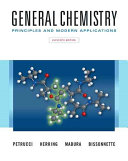Question
The specific heat capacities of $\mathrm{Li}(s), \mathrm{Na}(s), \mathrm{K}(s), \mathrm{Rb}(s)$, and $\mathrm{Cs}(s)$ at $25^{\circ} \mathrm{C}$ are $3.57,1.23,0.756,0.363$, and $0.242 \mathrm{~J} \mathrm{~K}^{-1}$ $\mathrm{g}^{-1}$, respectively. Compute the molar heat capacities of these elements and identify any periodic trend. If there is a trend, use it to predict the molar heat capacity of francium, $\operatorname{Fr}(s)$.
The specific heat capacities of $\mathrm{Li}(s), \mathrm{Na}(s), \mathrm{K}(s), \mathrm{Rb}(s)$, and $\mathrm{Cs}(s)$ at $25^{\circ} \mathrm{C}$ are $3.57,1.23,0.756,0.363$, and $0.242 \mathrm{~J} \mathrm{~K}^{-1}$ $\mathrm{g}^{-1}$, respectively. Compute the molar heat capacities of these elements and identify any periodic trend. If there is a trend, use it to predict the molar heat capacity of francium, $\operatorname{Fr}(s)$.
Show more…
Chapter 12, Problem 5

Instant Answer
Step 1
The specific heat capacities at \(25^{\circ} \mathrm{C}\) are: - \(\mathrm{Li}(s): 3.57 \, \mathrm{J} \, \mathrm{K}^{-1} \, \mathrm{g}^{-1}\) - \(\mathrm{Na}(s): 1.23 \, \mathrm{J} \, \mathrm{K}^{-1} \, \mathrm{g}^{-1}\) - \(\mathrm{K}(s): 0.756 \, \mathrm{J} \, Show more…
Show all steps










